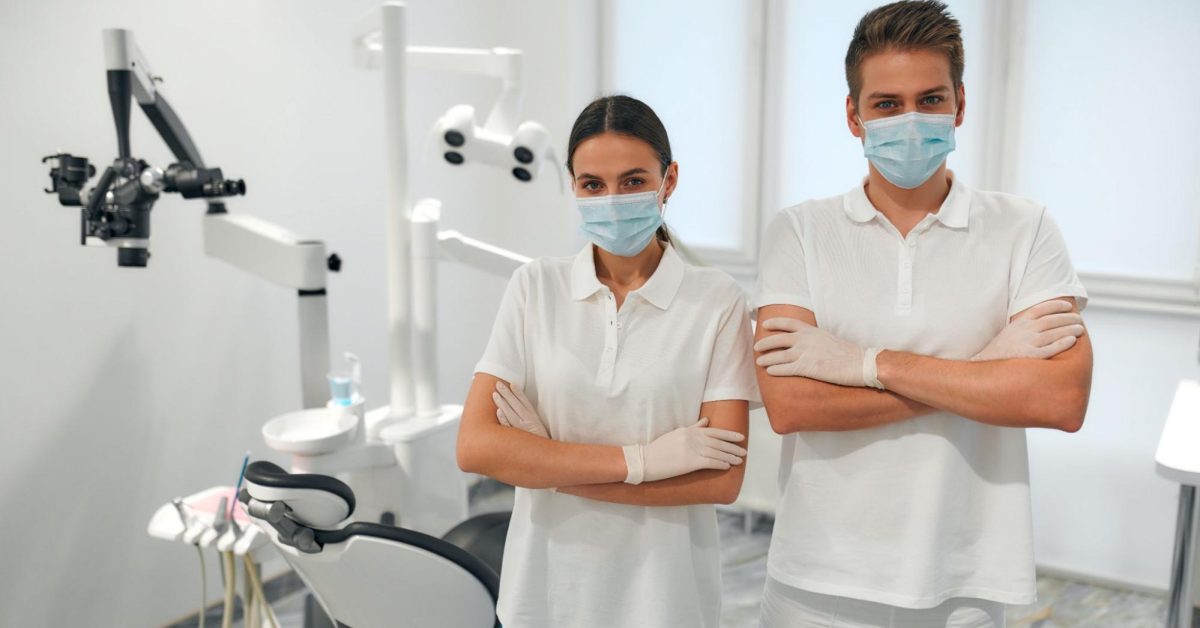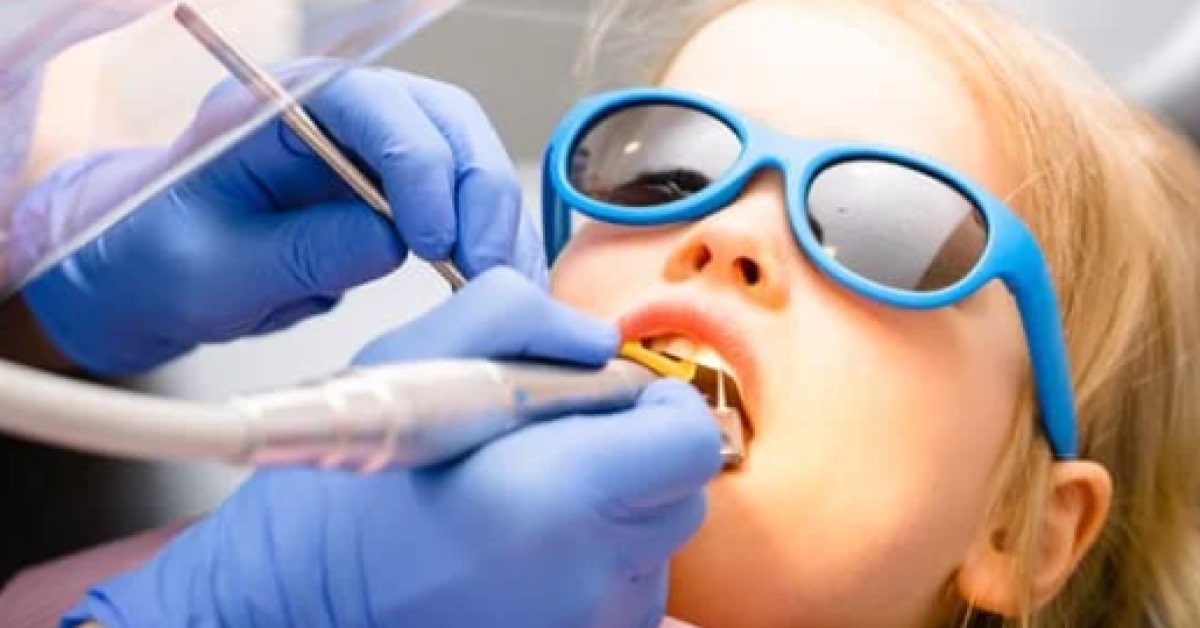Blog
February 09, 2023 • 15 mins readIs Dentistry Doomed to be a Commodity?
Are you worried that dentistry is becoming a commodity? Find out what the experts have to say, Learn about the challenges facing dentists and how to stay competitive in the industry.
Author

Crystal May
Director of Medical Billing Education for Devdent

In this Article
Dentists complete comprehensive education and earn a degree in either DDS (Doctor of Dental Surgery) or DMD (Doctor of Dental Medicine) — and, like their medical counterparts, are called doctors. However, there appears to be a shift in the mind frame of consumers, that dental treatment is now considered a retail commodity instead of a medical treatment.
Yet, when we ask dental professionals what they most want to be known for, they unanimously say that providing top-of-the-line health care is their number one goal. So why are dentists not considered healthcare providers?
There are several factors why dentists aren’t considered health care providers like their medical doctor counterparts by the general public. First, because dental offices have crossed into retail advertising and financing, patients may mistake them for a retail service instead of a medical practice. Secondly, there is a bias from other healthcare providers who do not consider dentists colleagues or collaborating physicians. Lastly, dental insurance has lagged far behind medical insurance and offers too few benefits.
So, what steps can we follow to help change the mindset that dentists simply provide retail services instead of dental healthcare?
Promoting Retail Services vs. Health Care
Customers decide to spend their money on whatever they value most in the retail arena, which is considered disposable or discretionary spending. Right now, your patients are
deciding if they want to spend their discretionary income on their dental treatment or the latest iPhone. Ultimately, that decision is weighed mainly on
who is the better salesman, you or Apple.
Are you promoting your practice with discounts, promotions, and specials? If so, you are promoting your healthcare services as a commodity.
When you offer discounts, promotions, and giveaways, and participate in aggressive advertising focused on price, you compete in the retail space. Yet, dental practices could never compete with the marketing budget of a large company like Apple (up to $257 M annually).
Stop and ask yourself if you are OK with competing for your patient’s discretionary income with large corporations that have large marketing budgets.
While patients need to change their mindset about dental services, your approach may also need to shift to stay competitive.
Medical Misperceptions
You may be saying: “I don’t offer discounts or aggressive price-based marketing, why do my patients consider my services a commodity? Well, patients consider dental services a commodity because they are greatly influenced by the relationship medical doctors and dental doctors have with one another, which are not historically models of active collaboration.
In the mid-1800s, when the first dental school was established, a distinct line of separation was created both in education and associations (1). Several significant US health care reforms have reinforced this separation, including the Affordable Care Act (ACA) of 2010. For instance, under the ACA, dental care for adults was not included as an essential health benefit (2) but is instead an add-on service through the marketplace for an additional premium.
This is a small part of a broad misunderstanding of oral health not relating to overall health. Approximately 27 million people in the USA see a dentist, but not a physician annually. Compare that to the 108 million people who see a physician but not a dentist every year (3). Yet the science supports that collaborating on medical and dental conditions could improve overall health and reduce healthcare costs if medical insurance could be billed for dental treatment.
If dentistry were treated as a division of health care, as it should be, dentists could better contribute to holistic patient care by identifying medical conditions, and medical doctors would see the opportunity to improve outcomes and even reimbursement in the value-based health care system.
One challenge in providing appropriate oral care is that many patients seek dental treatment in the wrong places. For patients with dental issues presenting at hospital emergency departments, the average annual cost is approximately $1.6 billion, a significant financial burden on the patients and the system (4). However, those patients did not receive that dental treatment in the emergency department setting. Twenty percent of patients also seek relief from dental pain in physicians’ primary care offices, which are not equipped to resolve their dental needs (5).
While dental doctors must learn anatomy far beyond the oral cavity and have advanced pharmaceutical knowledge, medical doctors do not share this cross-training. Anatomy classes for medical students do not generally include examining the teeth, even when craniofacial anatomy is covered. So, to offer a proper whole-body approach to health care with medical-dental care coordination, we need to make changes at the institutional level to bridge the gap.
Fortunately, change is already happening, even if slowly. Many public health officials and organizations now support the role of dentists in screening, diagnosis, and even the treatment of certain medical conditions. With an emphasis on improving the healthcare system’s ability to provide early diagnosis for specific health problems (6-8) — particularly sleep apnea, diabetes, hypertension, oral cancer, and HIV (9-11). Efforts to support dentists in providing this kind of whole-patient care will provide wide-ranging benefits.
Disparities Between Dental and Medical Insurance
The last of the significant obstacles we face in medical-dental collaboration is insurance. Although they were established only a few decades apart, medical insurance was explicitly designed to cover significant, unpredictable expenses, while dental insurance was intended to cover predictable and lower-cost preventive care. However, with the last century of research and advancements, we know that dentistry plays a critical role far beyond preventative care.
Approximately two-thirds of Americans have dental benefits. By comparison, in 2013, 83 percent of working-age adults had medical health insurance coverage. Therefore, the percentage of the population without dental insurance is more than twice that of those medically uninsured (13-14). Even with two-thirds of Americans having dental insurance, the data suggest that financial barriers to dental care are more significant than any other health service (15).
It starts with the limited coverage dental insurance provides, capping at $1,500 for half of dental PPOs. Due to the high out-of-pocket expense, dental care is an important service that people forego (16-17). Yet more than 20 years ago, former US Surgeon General David Satcher recognized that “you cannot be healthy without oral health.”
How can we overcome this financial barrier to treatment? Look to medical insurance to help reduce the burden on patients and increase access to care.
Billing medical insurance for dental procedures increases case acceptance by lowering out-of-pocket costs. It also demonstrates to the medical profession and patients that dentists are health care providers who can bill health insurance.
When a patient thinks of medical treatment, they consider prognosis, outcome, and consequences if left untreated, as compared to having a retail mindset of spending discretionary money. A shift in patient mindset about dental procedures could be the single most important catalyst in changing the divide between dentistry and medicine.
Billing medical insurance means that physicians will see dentists’ willingness to speak their language by using “their” insurance billing system. We surveyed just under 100 medical doctors and asked them which factors would influence their decision to refer patients to dentists for sleep treatment. Their options were: level of training and experience, proof of performance and outcome, willingness to accept medical insurance, or willingness to communicate frequently on the status of the mutual patient. Unanimously, the physicians selected the dentist’s willingness to accept medical insurance as the most critical factor in referring. Dentists can collaborate better with physicians by using medical billing systems.
Dentistry: Part of Whole-Patient Health Care
Changing how patients and medical doctors view dentistry will take dedication from dentists and their partners to shift dentistry from a commodity to a medically necessary service. You can also help by treating the care you offer as medical treatment, not as an optional retail commodity.
Another hurdle will be redesigning both dental and medical schools to remove the invisible barrier between the mouth and the rest of the body. Harvard School of Dental Medicine is already taking exciting steps by having first-year dental students study side by side with medical students, who in turn are spending time understanding the link between oral health and overall health.
Revamping insurance is also vital. The government has taken some good first steps in providing benefits for oral health with the Medicare Dental Benefit Act of 2021, which calls for the inclusion of oral health benefits in Medicare Part B for two-thirds of Medicare beneficiaries who currently have no dental coverage.
As dentists with DDS or DMD degrees, you can influence the insurance and health care shift by billing medical insurance for any medically necessary procedure that falls within the scope of your license. However, since dental billing alone can be complex, many feel that medical billing would be overwhelming and confusing. While it’s true that medical billing can be challenging, you don’t have to figure it out alone.
Henry Schein One offers education and support with the Imagn Billing solution from Devdent. Now, medical billing is within the reach of dentists, which will help patients receive the care they need, as well as facilitate collaboration between dentists and medical doctors.
You have an important part to play in removing the misconception that dentists aren’t health care providers. Let’s reduce the unnecessary spending on Emergency Department visits for dental issues and help over 76 million Americans without dental insurance receive the dental treatment they need to be healthy. Together, let’s reaffirm that dentistry is a healthcare service and not a commodity.
Learn more about how Imagn Billing can help you minimize your patient’s portion of the cost, increase case acceptance and practice revenue, and improve your patients’ overall health. Visit https://campaign.dentrix.com/imagn or call 833.212.3389 to request a consultation.
Resources
- Simon L. Overcoming historical separation between oral and general health care: interprofessional collaboration for promoting health equity. AMA J Ethics. 2016;18(9):941-949.
- Mertz EA. The dental-medical divide. Health Aff (Millwood). 2016;35(12):2168-2175.
- Atchison KA, Weintraub JA, Rozier RG. Bridging the dental-medical divide: Case studies integrating oral health care and primary health care. J Am Dent Assoc. 2018;149(10):850-858. doi:10.1016/j.adaj.2018.05.030.,2 Panesar SS. The role of oral health in an evolving health care delivery system: An interview with Bruce Donoff, D.M.D., M.D. Healthc (Amst). 2020;8(1):100399. doi:10.1016/j.hjdsi.2019.100399.
- Aungst L, Swan BA. Examining Oral Health Education for Nondental Providers. The Journal for Nurse Practitioner. Volume 16, Issue 6, June 2020, Pages 470-473. https://doi.org/10.1016/j.nurpra.2020.03.014.
- Cohen LA, Bonito AJ, Akin DR, et al. Toothache pain: a comparison of visits to physicians, emergency departments and dentists. J Am Dent Assoc. 2008;139(9):1205-1216.
- New opportunities for dentistry in diagnosis and primary health care. report of panel 1 of the Macy Study. J Dent Educ. 2008;72(2 suppl):66–72.
- 27. Glick M, Greenberg BL. The potential role of dentists in identifying patients’ risk of experiencing coronary heart disease events. J Am Dent Assoc. 2005;136(11):1541–1546.
- 28. Jontell M, Glick M. Oral health care professionals’ identification of cardiovascular disease risk among patients in private dental offices in Sweden. J Am Dent Assoc. 2009;140(11):1385–1391.
- New opportunities for dentistry in diagnosis and primary health care. report of panel 1 of the Macy Study. J Dent Educ. 2008;72(2 suppl):66–72.
- Glick M, Greenberg BL. The potential role of dentists in identifying patients’ risk of experiencing coronary heart disease events. J Am Dent Assoc. 2005;136(11):1541–1546.
- Jontell M, Glick M. Oral health care professionals’ identification of cardiovascular disease risk among patients in private dental offices in Sweden. J Am Dent Assoc. 2009;140(11):1385–1391.
- 41Centers for Disease Control and Prevention . BRFSS prevalence and trends data: health care coverage [Internet]. Atlanta (GA) : CDC ; 2013 [cited 2016 Nov 7 ]. Available from: http://nccd.cdc.gov/BRFSSPrevalence/rdPage.aspx?rdReport=DPH_BRFSS.ExploreByTopic&islClass=CLASS07&islTopic=Topic29&islYear=2014&go=GO
- National Association of Dental Plans . Who has dental benefits? [Internet]. Dallas (TX) : NADP ; [cited 2016 Oct 25 ]. Available from: https://www.nadp.org/Dental_Benefits_Basics/dental_bb_10
- National Center for Health Statistics . Health, United States, 2014: with special feature on adults aged 55–64 [Internet]. Hyattsville (MD) : NCHS ; 2015 . Table 102: Gross domestic product, national health expenditures, per capita amounts, percent distribution, and average percent change: United States, selected years 1960–2013; [cited 2016 Oct 25 ].
- Vujicic M, Buchmueller T, Klein R. Dental care presents the highest level of financial barriers, compared to other types of health care services. Health Aff (Millwood). 2016;35(12):2176-2182. View Article PubMed
- Wall T , Nasseh K , Vujicic M . Most important barriers to dental care are financial, not supply related . Chicago (IL) : American Dental Association ; 2014 Oct.
- Vujicic M , Buchmueller T , Klein R . Dental care presents the highest level of financial barriers, compared to other types of health care services . Health Aff (Millwood) . 2016 ; 35 ( 12 ): 2176 – 82 .



